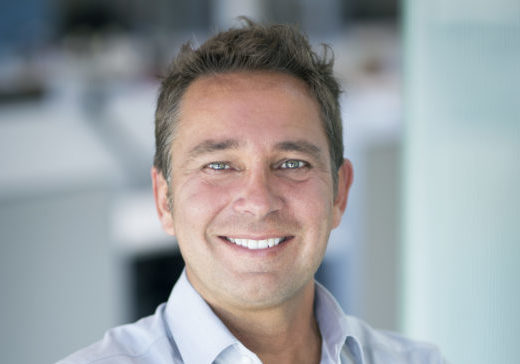M+E Daily

Jacob Takes Reins of Verizon Digital Media Services
Story Highlights
After more than two years at the helm of Verizon Digital Media Services (VDMS), president Bob Toohey has stepped down, to take over as EVP for AOL, which Verizon acquired for $4.4 billion in mid-2015.
Enter Ralf Jacob. The longtime chief revenue officer for VDMS has named the new president of the company. And integrating the businesses of both AOL and Yahoo (which Verizon acquired for $4.8 billion in July) will be on the top of his list.
Jacob sat down with the Media & Entertainment Services Alliance (MESA) to talk about VDMS’s international plans, the company’s competition, and what he brings to the table in an increasingly challenging digital environment.
MESA: As the new president of VDMS, what’s on your agenda?
Jacob: My predecessors did a fantastic job getting us to where we are, and a lot of people have asked why now, and why the change? If you take a look at what Bob has accomplished over the last two and a half years, nobody knew when he started what VDMS actually stood for. They all knew Verizon, but they didn’t know what the focus was of this new digital media services group that was created.
The challenge for us now, with AOL and Yahoo coming on board, is to make sure we combine the efforts between these three larger organizations. What AOL and Yahoo have been doing is what people refer to as the on-demand side, selling ads, focusing on display ads, and publishing assets into thousands of web sites. All of that needs to be powered by some sort of supply chain, which is where VDMS comes in, and my job now is to make sure that as we embark on this new chapter with Yahoo and Verizon as a joint entity, that we provide such services. VDMS is a tech services company that focuses on CDM delivery and anything that pertains to media, particularly live linear TV and live events. We want to continue on the successes we have built on in the last two years by integrating further with what we’ve acquired. That will be my focus.
MESA: What are the biggest challenges that you see in your new role, the challenges for VDMS going ahead?
Jacob: Continued growth. The expectations of year after year of 40% revenue growth is that they want to see 50% next year and 60% the year after that. That’s always the challenge, and it’s combined by the fact that within North America, we have a recognized brand, something associated with anything that has to do with OTT, linear, live TV video, and as a fantastic CDM. Going into international waters now, and expanding is my biggest challenge, and that’s something we need to focus on. Two years ago nobody knew what VDMS stood for and today we’re the go-to company when somebody wants to put their linear feeds or media assets online. But we have to do the same thing we need in North America internationally. That will be where my focus will be and the focus will be. And it’s a challenge, with new rules, new regulations, new technology stacks, closed captioning and linear feeds, are done differently in different countries. There are security restrictions, personal information is handled very differently elsewhere than here. Those are challenges I’ll have to tackle.
MESA: What kind of partnerships do you see playing the biggest roles going forward?
Jacob: Having grown the network from 2.4 terabytes per second a few years ago to over 20 TBPS, you couldn’t do this without peering and transit agreements. We have today some 3,000-plus peering and transit agreements, partnerships with large telcos that some would actually consider competitors. The world wouldn’t work, especially the online world today, if we don’t strike deals with what are considered to be competitors.
From an international perspective, Google Cloud, we’re a CDN interconnect partner, Airtel co-launched four Indian PoPs [CDN points of presence] in the last three or four months, and for some six PoPs in Latin America, we had to strike deals with local telcos to accomplish that. That’s not going to stop, that’s going to increase more and more, because of the demand.
MESA: What’s next for you and VDMS?
Jacob: There’s growing competition, and if you take a look at what we have done from a market perspective, it’s a form of flattery when you see your own market materials in what the competition brings out, the messaging of having a end-to-end, go-to ecosystem. There’s been so much consolidation in this industry in the last year and a half, a lot of companies out there that are in competition with us, built their system based on spectrum-free components. And those components have again and again been scooped up by larger competitors, Amazon, or Google, or Facebook, and that consolidation will continue.
What we’ve done years ago is already look at the companies beating us in the marketplace, and bring them under the umbrella of VDMS, an ecosystem that is truly end-to-end. When something goes wrong, the TV goes black, the CDN isn’t pushing anything through, you call the first vendor, which points the finger at the second vendor, and the third vendor says they had an outage contingent on maintenance. With us, it’s us, it’s our responsibility to push those services through, and because we’re so focused on media, we’ve created network operations centers that are redundant of each other, and that’s helped contribute to us being one of the incumbents in North America, where big broadcasters talk to the Verizon guys. We’ve never built anything on suspicion. Anything we roll out is due to a plethora of customers asking for the same thing. They drive our roadmaps, it’s not our ideas.









